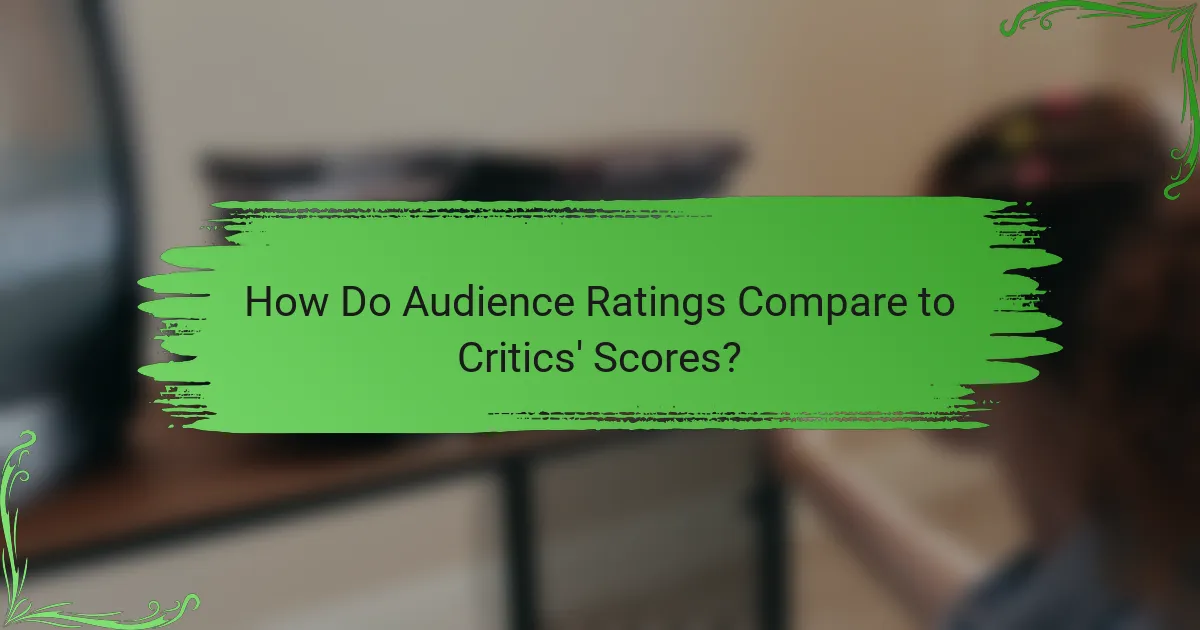The highest rated Japanese movies on Rotten Tomatoes exemplify a remarkable fusion of critical acclaim and audience appreciation. These films are distinguished by their unique storytelling, cultural richness, and artistic innovation, positioning them prominently in the global cinema landscape.

What Are the Highest Rated Japanese Movies on Rotten Tomatoes?
The highest rated Japanese movies on Rotten Tomatoes showcase a blend of critical acclaim and audience appreciation. These films often feature unique storytelling, cultural depth, and artistic innovation, making them stand out in the global cinema landscape.
Spirited Away (2001)
Directed by Hayao Miyazaki, “Spirited Away” is a landmark animated film that has received widespread acclaim, including an Academy Award for Best Animated Feature. With a Rotten Tomatoes score in the high nineties, it is celebrated for its imaginative world and strong character development.
The story follows a young girl, Chihiro, who becomes trapped in a spirit world and must navigate various challenges to save her parents. The film’s rich visuals and emotional depth resonate with audiences of all ages, making it a timeless classic.
Rashomon (1950)
Akira Kurosawa’s “Rashomon” is a groundbreaking film that explores the nature of truth and perception through a complex narrative structure. It holds a high Rotten Tomatoes score and is often credited with influencing modern storytelling techniques.
The film presents multiple perspectives on a crime, highlighting how personal biases shape our understanding of events. Its innovative approach has made it a staple in film studies and a must-see for any cinema enthusiast.
Ikiru (1952)
“Ikiru,” another masterpiece by Akira Kurosawa, tells the poignant story of a bureaucrat facing terminal illness who seeks to find meaning in his life. The film enjoys a high rating on Rotten Tomatoes and is praised for its profound themes and character exploration.
The protagonist’s journey to create a children’s playground serves as a powerful commentary on legacy and the human condition. Its emotional weight and moral questions continue to resonate with viewers today.
Seven Samurai (1954)
Often regarded as one of the greatest films ever made, “Seven Samurai” is a historical epic directed by Akira Kurosawa. With a high Rotten Tomatoes score, it has influenced countless films across genres, particularly in the action and adventure categories.
The plot revolves around a group of samurai hired to protect a village from bandits, showcasing themes of honor, sacrifice, and camaraderie. Its innovative cinematography and character development have set a standard for ensemble films.
Shoplifters (2018)
The narrative follows a family living on the fringes of society who take in a young girl they find abandoned. It raises questions about morality, love, and the meaning of family, making it a compelling watch for those interested in contemporary Japanese cinema.

How Do Audience Ratings Compare to Critics’ Scores?
Audience ratings often differ from critics’ scores, reflecting varying perspectives on films. While critics may focus on artistic merit and technical aspects, audiences tend to prioritize entertainment value and emotional impact.
Audience vs. Critic Ratings Overview
Generally, audience ratings can be more favorable than critics’ scores, especially for popular genres like action or animation. Critics often provide a more analytical view, which can lead to lower scores for films that audiences enjoy for their entertainment factor. This discrepancy highlights the subjective nature of film appreciation.
Notable Discrepancies in Ratings
Some films receive high audience ratings despite low critic scores, indicating a divide in taste. For instance, cult classics or blockbuster hits may resonate strongly with viewers while failing to impress critics. Understanding these discrepancies can help viewers choose films that align with their preferences.
Examples of High Audience Scores
Films like “Your Name” and “Spirited Away” showcase high audience scores on platforms like Rotten Tomatoes, often exceeding 90%. These movies are celebrated for their storytelling and emotional depth, appealing to a broad audience. Such examples illustrate how audience engagement can significantly differ from critical analysis.

What Factors Contribute to a Movie’s High Rating?
A movie’s high rating often stems from a combination of compelling storytelling, exceptional direction, striking cinematography, and powerful performances. Each of these elements plays a crucial role in how audiences and critics perceive the film’s overall quality and impact.
Storytelling and Direction
Effective storytelling is central to a movie’s success, as it engages viewers and keeps them invested in the narrative. A well-structured plot, relatable characters, and emotional depth can elevate a film’s rating significantly. Directors who skillfully balance these elements often receive higher acclaim.
For instance, Japanese filmmakers like Hayao Miyazaki and Akira Kurosawa are renowned for their masterful storytelling techniques, which blend cultural nuances with universal themes. Their films often resonate deeply with both local and international audiences, contributing to their high ratings.
Cinematography and Visual Style
Cinematography and visual style are vital in creating an immersive experience for viewers. The use of color, lighting, and camera angles can enhance the emotional tone of a film, making it visually captivating. Japanese cinema often employs unique visual techniques that reflect cultural aesthetics, adding layers of meaning to the story.
Films like “Your Name” and “Rashomon” showcase stunning visuals that complement their narratives, leading to both critical and audience acclaim. A strong visual style can significantly influence a movie’s rating on platforms like Rotten Tomatoes.
Performance of Actors
The performance of actors is another key factor that contributes to a movie’s high rating. Strong performances can bring characters to life, making their journeys relatable and impactful. In Japanese cinema, actors often undergo rigorous training to embody their roles authentically, which can resonate well with audiences.
For example, performances in films such as “Ikiru” and “Shoplifters” have been praised for their emotional depth and realism. High-quality acting not only enhances the storytelling but also often leads to positive reviews and higher ratings from critics and viewers alike.

Which Japanese Movies Have Won International Awards?
Japanese cinema has received significant recognition on the global stage, with numerous films winning prestigious international awards. These accolades highlight the artistic and cultural impact of Japanese films, showcasing their storytelling and cinematic techniques.
Academy Awards Winners
Several Japanese films have made their mark at the Academy Awards, notably “Rashomon” (1951), which won the Best Foreign Language Film. More recently, “Spirited Away” (2002) received the same honor, becoming a landmark in animated cinema. These wins underscore the global appreciation for Japanese storytelling and artistry.
When considering Academy Awards, it’s essential to note that films must be submitted by their respective countries, and only a select few are nominated each year. This makes winning even more prestigious.
Cannes Film Festival Highlights
The Cannes Film Festival has celebrated numerous Japanese films, with notable winners including “Tokyo Story” (1953) and “Shoplifters” (2018), which won the Palme d’Or. These films exemplify the depth and diversity of Japanese cinema, often exploring complex social themes.
Participation in Cannes can significantly boost a film’s visibility and international distribution. Filmmakers often aim for this festival to gain critical acclaim and attract global audiences.
Golden Globe Recognition
While fewer Japanese films have won Golden Globes, “Rashomon” and “Spirited Away” have both received nominations, highlighting their international appeal. The Golden Globes often serve as a precursor to the Oscars, making these nominations noteworthy for Japanese filmmakers.
It’s important to keep in mind that the Golden Globes focus on both film and television, and the competition is fierce. Winning or even being nominated can elevate a film’s profile significantly in the industry.

What Are the Trends in Japanese Cinema?
Japanese cinema is experiencing a dynamic evolution, marked by innovative storytelling and diverse genres. Recent trends highlight a blend of traditional themes with modern influences, reflecting both local culture and global interests.
Emerging Genres and Styles
In recent years, Japanese cinema has seen the rise of genres such as horror, fantasy, and animated features, often incorporating unique cultural elements. Films like “Your Name” and “Ringu” showcase how these genres can blend emotional depth with thrilling narratives.
Directors are experimenting with visual styles and storytelling techniques, leading to a more varied cinematic landscape. This shift allows for greater audience engagement, appealing to both domestic viewers and international fans.
Impact of Streaming Services
Streaming platforms like Netflix and Amazon Prime have significantly influenced Japanese cinema by providing wider distribution channels. These services enable filmmakers to reach global audiences, increasing the visibility of both mainstream and independent films.
Moreover, streaming has encouraged the production of original content tailored for specific markets, resulting in a diverse array of films that cater to various tastes. This trend has also led to collaborations with international creators, enriching the storytelling landscape.
Global Collaborations and Co-Productions
Japanese filmmakers are increasingly engaging in global collaborations, resulting in co-productions that blend different cultural perspectives. These partnerships often lead to higher production values and innovative storytelling techniques.
Examples include films like “The Last Guardian,” which combine Japanese artistry with Western cinematic approaches. Such collaborations not only enhance the quality of films but also expand their reach, appealing to a broader audience across different regions.

How to Discover More About Japanese Cinema?
To discover more about Japanese cinema, explore various resources such as film festivals, streaming platforms, and dedicated film websites. Engaging with community discussions and reviews can also enhance your understanding and appreciation of this rich cinematic tradition.
Explore Film Festivals
Film festivals are excellent venues for discovering Japanese cinema. Events like the Tokyo International Film Festival and the Japan Cuts showcase a wide range of films, from mainstream hits to independent gems. Attending these festivals allows you to experience films that may not be widely released outside Japan.
Many festivals also offer panels and discussions with filmmakers, providing insights into the creative process and cultural context behind the films. This interaction can deepen your appreciation and understanding of Japanese cinema.
Utilize Streaming Platforms
Streaming platforms such as Netflix, Amazon Prime Video, and Criterion Channel often feature a selection of Japanese films. These services provide access to both classic and contemporary works, making it easier to explore different genres and styles. Look for curated lists or recommendations to find highly-rated films.
Some platforms may also offer subtitles or dubbing in various languages, making it accessible for non-Japanese speakers. Regularly check for new releases to stay updated on the latest offerings in Japanese cinema.
Engage with Online Communities
Online communities and forums dedicated to film can be valuable resources for discovering Japanese cinema. Websites like Reddit, Letterboxd, and specialized film blogs often feature discussions, reviews, and recommendations from fellow film enthusiasts. Engaging with these communities can introduce you to hidden gems and critically acclaimed titles.
Participating in discussions or following film critics who specialize in Japanese cinema can also provide deeper insights and context. This interaction can enhance your viewing experience and help you connect with others who share your interest.
